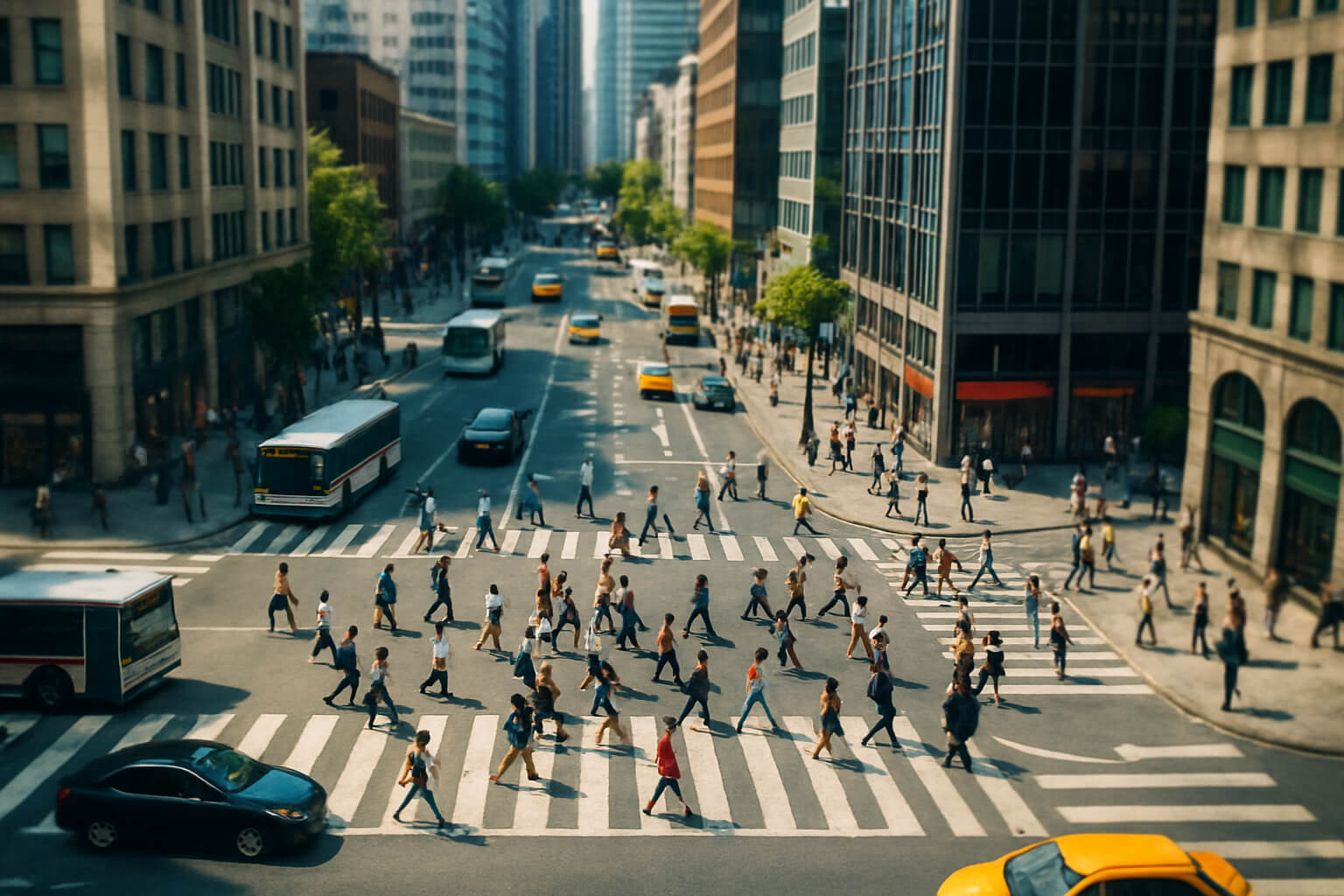Tilt-shift photography is a creative and technical technique that allows you to manipulate focus and perspective for unique visual effects. Whether you're aiming to correct architectural distortion or create the illusion of miniatures, tilt-shift photography opens up a world of possibilities beyond traditional photography.
Let’s dive into what tilt-shift photography is, how it works, and how you can start using it to elevate your imagery.
What Is Tilt-Shift Photography?
Tilt-shift photography uses a special type of lens that enables you to tilt the plane of focus and shift the lens’s optical axis. This manipulation alters how the lens renders both depth of field and perspective.
Common Applications of Tilt-Shift Photography :
- Miniature Effect: Makes real-world scenes appear as though they are tiny models or toys.
- Architectural Correction: Fixes the convergence of lines in tall buildings to maintain a realistic perspective.
- Selective Focus: Isolates a subject with precise, controlled blur, creating stunning focus effects.
How Does a Tilt-Shift Lens Work?
Tilt-shift lenses offer two key functions that traditional lenses don’t :
- Tilt: Angles the lens to change the plane of focus. This is useful for creating selective focus or artistic blur effects in a scene.
- Shift: Moves the lens up, down, or side to side without tilting. This function corrects perspective distortion, making it ideal for architectural and real estate photography.
Normally, a lens focuses parallel to the camera’s image sensor, but with a tilt-shift lens, the axis of focus can be bent or shifted to allow for these creative and corrective effects.
When and Why to Use Tilt-Shift Photography
Tilt-shift lenses offer unparalleled control over both perspective and depth of field. Here are some great scenarios for using them :
- Architecture Photography: Keep lines straight when photographing tall buildings or structures. It prevents the distortion where vertical lines converge toward the top of the frame, commonly seen in images of skyscrapers.
- Product Photography: Achieve incredibly sharp focus on small objects while creatively blurring the rest of the scene, making the subject stand out.
- Landscape Photography: Tilt-shift lenses can increase depth of field without having to stop down your aperture, allowing for more clarity in both foreground and background.
- Miniature Effect: When you shoot from a high vantage point with a large aperture and maximum tilt, you can create the illusion of a miniature scene, where everything looks like tiny models or toys.
Explore more in What Is Environmental Portrait Photography?.
Equipment You’ll Need
To get started with tilt-shift photography, having the right equipment is essential :
- Tilt-Shift Lens: Brands like Canon, Nikon, and Sony offer tilt-shift lenses in various focal lengths, such as 17mm, 24mm, 45mm, and 90mm.
- Tripod: A sturdy tripod is crucial for maintaining alignment and preventing blur, especially when working with such specialized lenses. (Best Tripods for Travel and Studio Photography)
- Remote Shutter or Timer: A remote shutter or camera timer reduces camera shake, ensuring your photos are ultra-sharp.
- DSLR or Mirrorless Camera: Any camera with interchangeable lenses will be compatible with tilt-shift lenses.
For additional gear recommendations, check out Must-Have Camera Accessories.
Techniques to Try with Tilt-Shift Lenses
Here are some creative techniques you can try to get the most out of your tilt-shift lens :
- Miniature Simulation Effect
- Shoot from a high vantage point or elevated position.
- Use the maximum tilt and a wide aperture to create selective blur, mimicking the look of a diorama or model scene.
- Frame the scene as if you're photographing a small-scale model, with sharp focus on a tiny section and blur on the edges.
- Fixing Architectural Lines
- Aim your camera straight toward the building or structure, keeping it level.
- Use the shift function to align the top or bottom of the building without needing to tilt the camera body.
- This is particularly useful in real estate and architectural photography, where you need to preserve the accurate perspective of tall buildings.
- Depth of Field Control
- Tilt the lens to adjust the plane of focus, allowing for highly creative product shots or storytelling imagery where certain areas are sharply in focus while others are blurred.
- This technique is perfect for isolating specific subjects or objects with a dramatic effect.
Pro Tips for Tilt-Shift Photography
To get the most out of your tilt-shift lens, here are some expert tips :
- Use Live View or Tethered Shooting: These modes allow you to fine-tune your composition and ensure everything aligns as intended.
- Combine Tilt-Shift with Long Exposures or HDR: You can create stunning landscapes or architectural shots with unique lighting effects when using tilt-shift lenses in conjunction with long exposures or HDR techniques.
- Watch for Light Leaks: When using extreme tilt angles, light can sometimes leak into the lens. A lens hood or blocking light manually can help prevent this issue.
For more insights on creative photography, check out : How to Use Natural Light for Stunning Photos & Mastering Long Exposure Photography
Final Thoughts
Tilt-shift photography opens up a world of creative possibilities, whether you're correcting perspective in architectural shots, creating miniature effects, or controlling the depth of field in your compositions. With the right equipment and techniques, you can elevate your photography to a whole new level.
Ready to take your tilt-shift photography to the next level? Dive into our other guides: How to Sell Your Photos Online for Passive Income & How to Build a Photography Website
This version maintains the SEO-friendly structure with added emphasis on keywords and internal linking. It’s designed to keep readers engaged while providing them with valuable resources and tools. Let me know if you'd like any further tweaks!
